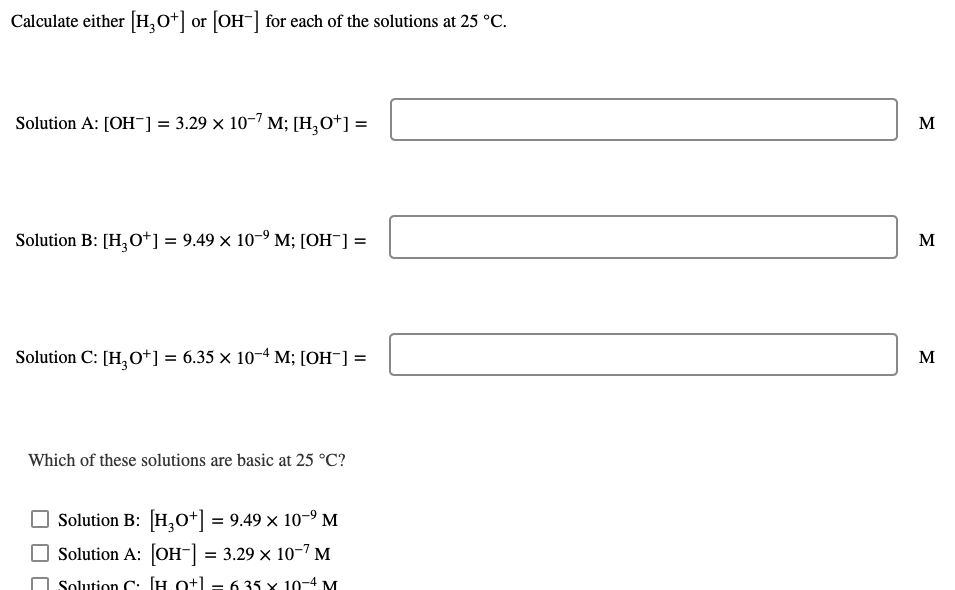Start by converting the concentrations to terms of pH for [H3O], and pOH for [OH].
Do that by substituting the "p" for "-log". For example, the first one is pOH = -log(OH) = -log(3.29E-7) = 6.48
Now we can use the equation pH + pOH = 14 to solve for the other. Continuing the example, pH + pOH = 14.
pH = 14 - pOH = 14 - 6.48 = 7.52
Now convert back to pH by substituting the "p" for "-log" again. pH = -log(H3O), Rearrange so the concentration of H3O is isolated, -pH = log(H3O), 10-pH = [H3O] = 10-7.52 = 3.02 x 10-8.
There are quicker ways to solve this if you memorize other equations, but I like it this way because all you need to remember is pH + pOH = 14 and that the "p" stands for "-log".
For the second part, look at the pH value you calculated. If pH > 7, solution is basic. If pH < 7, solution is acidic.






